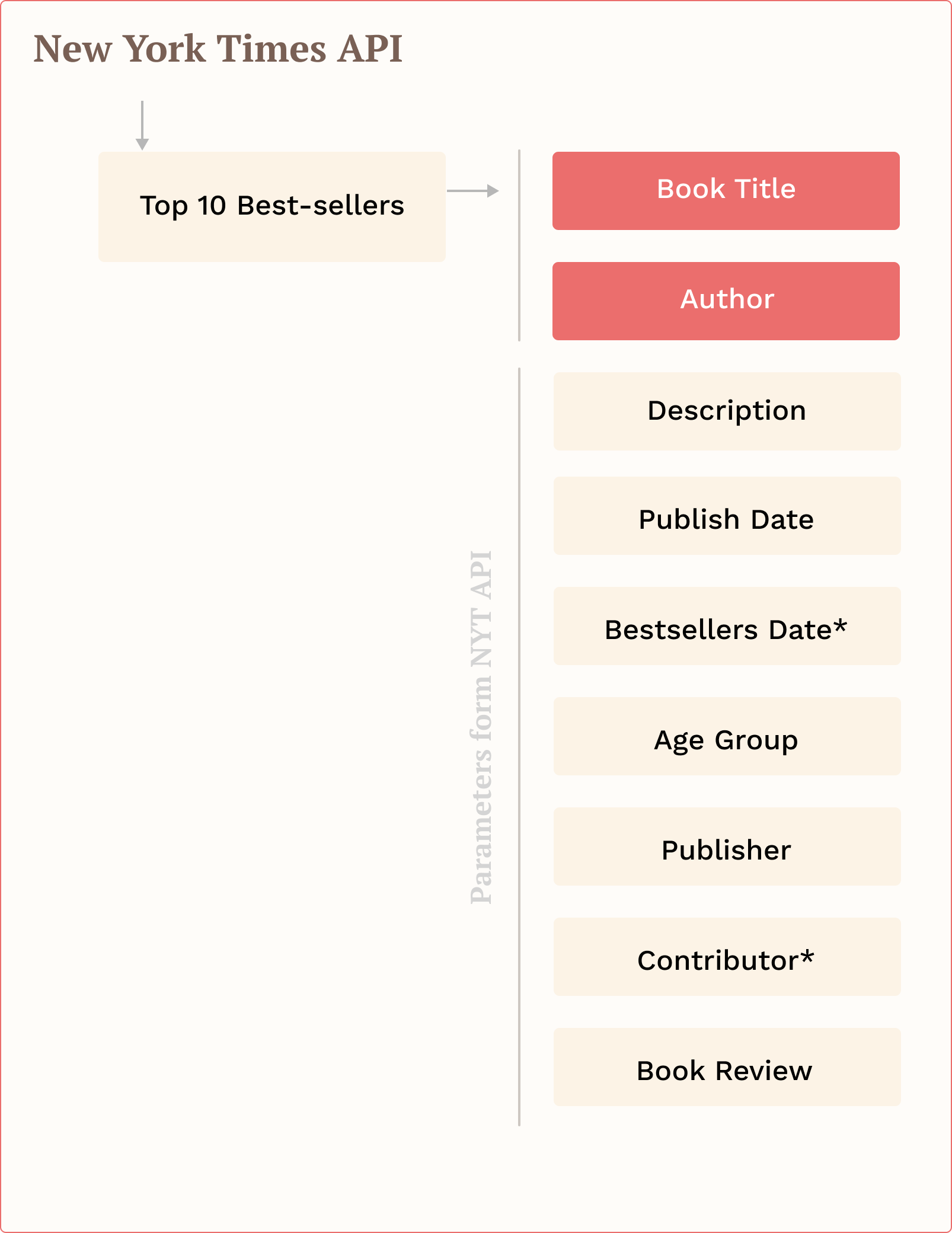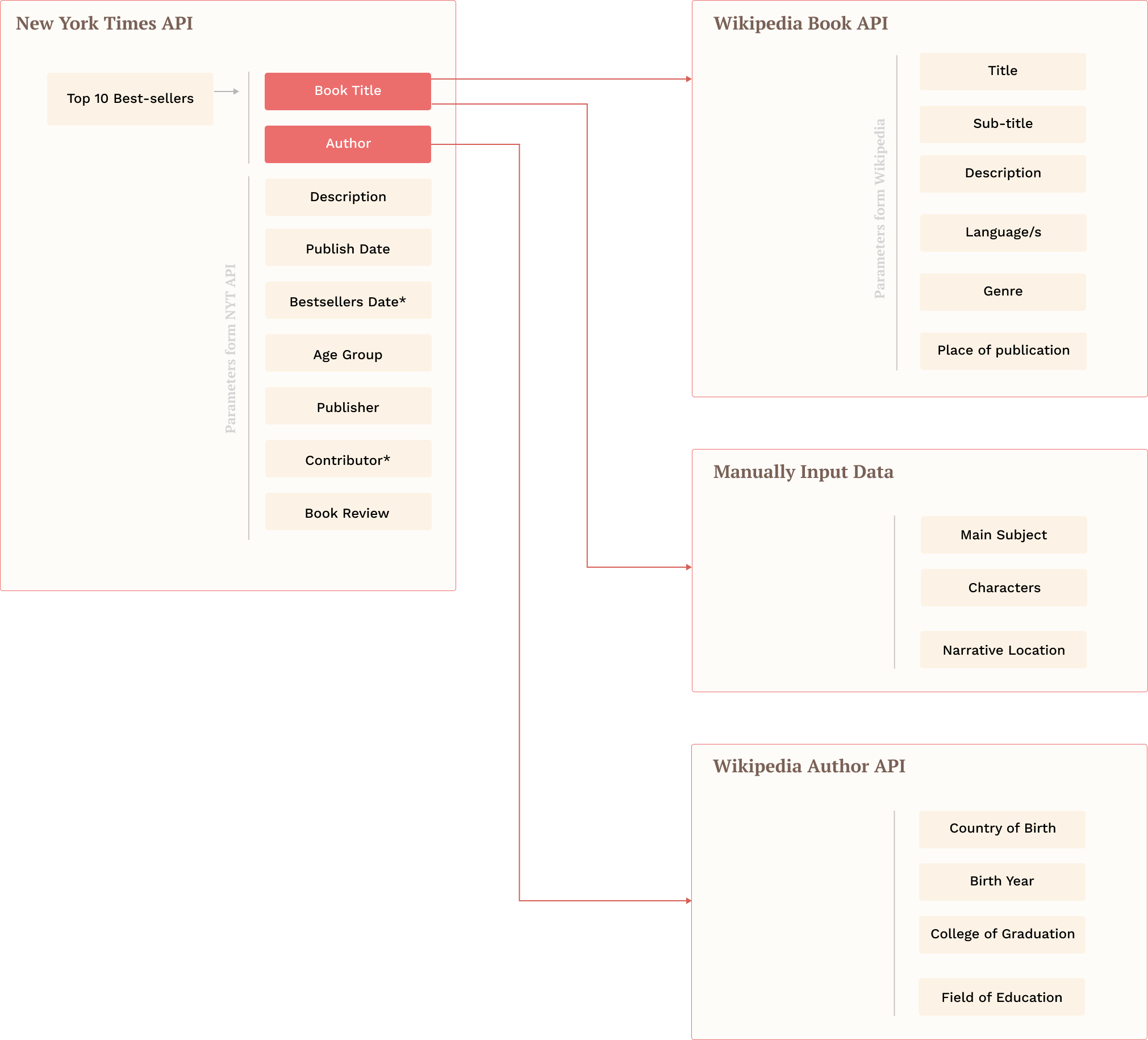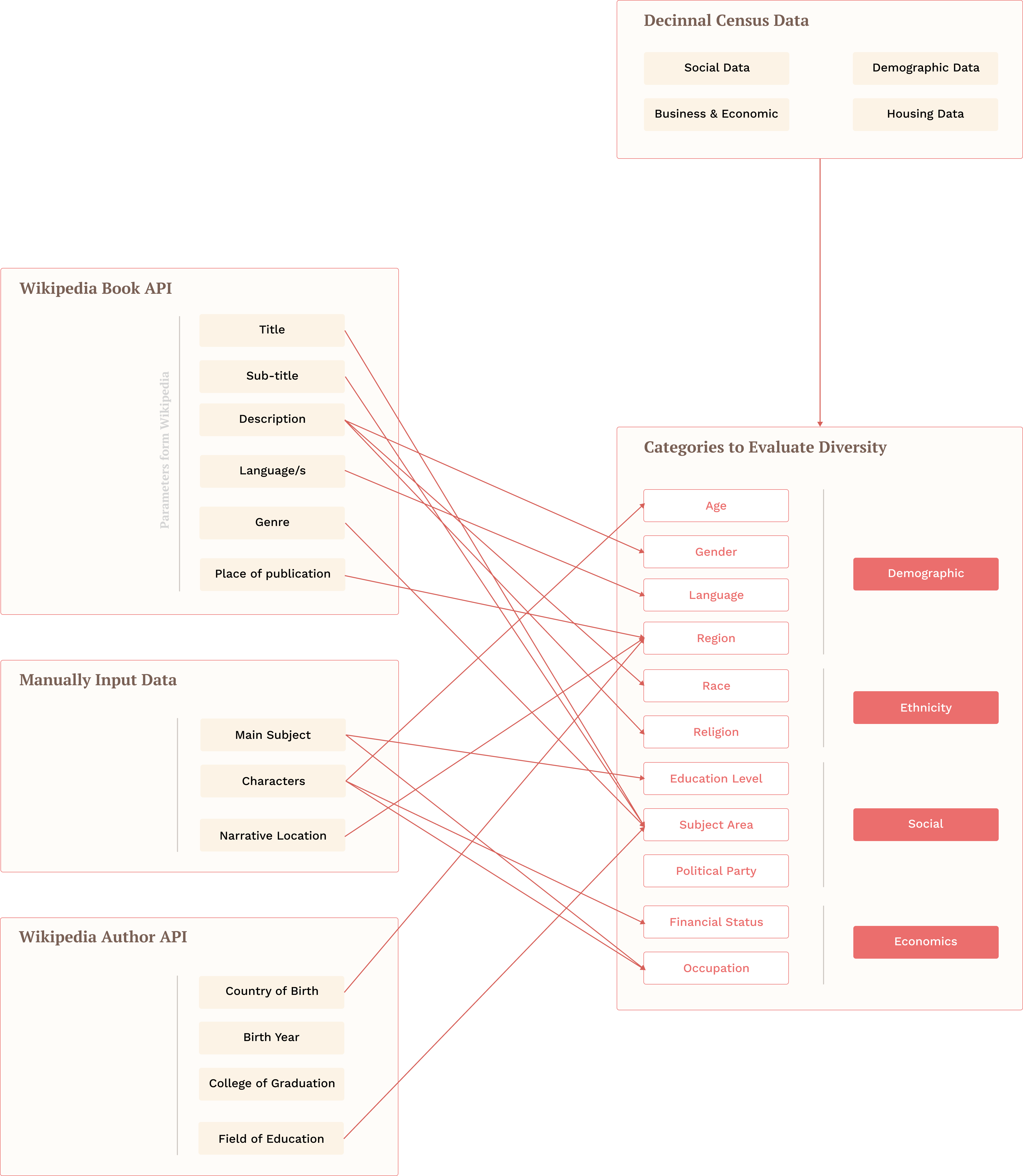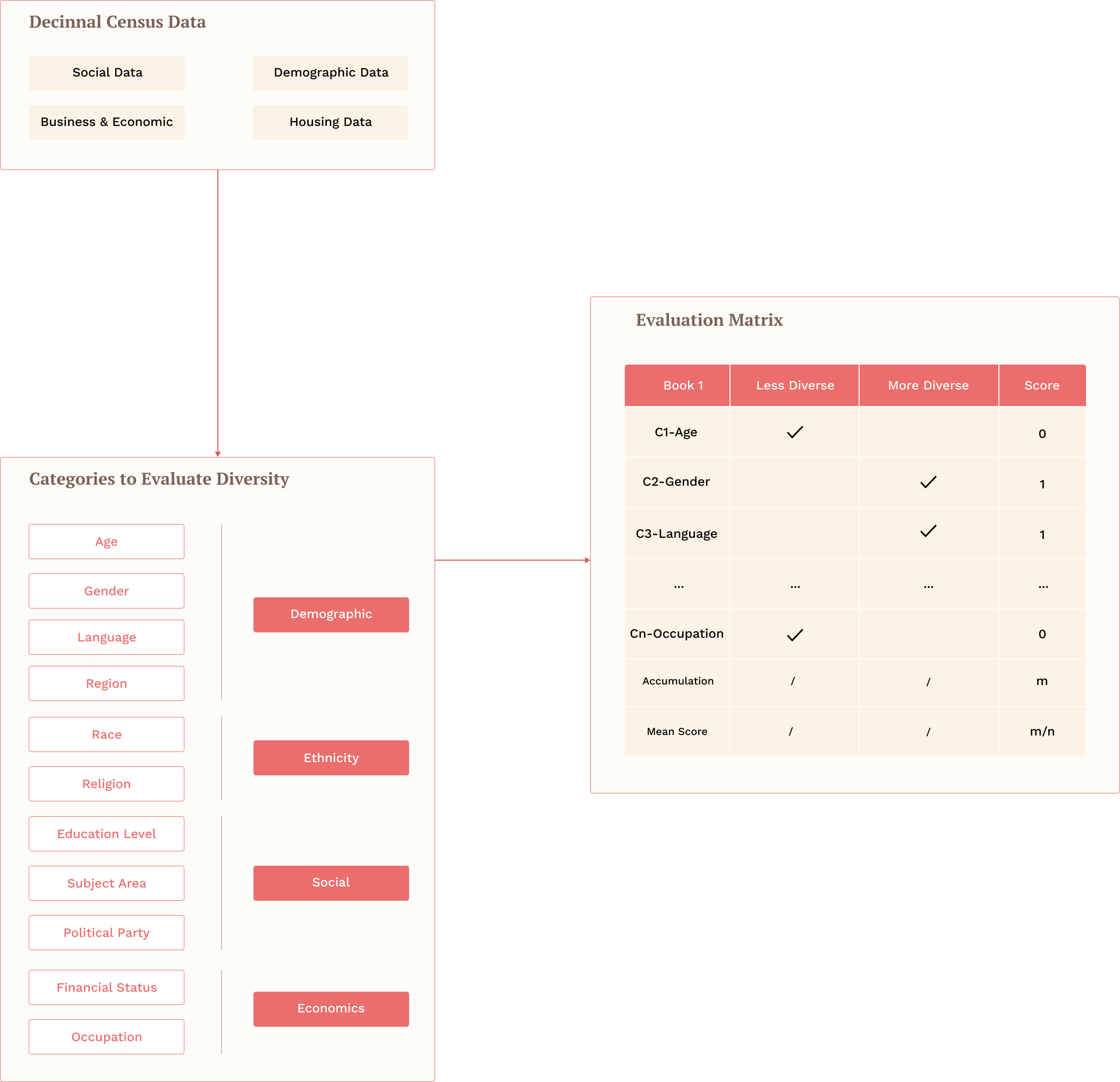Process
Research
To better understand the usage of census data in the context of
libraries, we interviewed 5 librarians and 5 data literacy
advocates from different domains. Our objective of the research
was to understand how census data is presently used in their work
and which data categories are most relevant to them. Research Questions
- What is data literacy?
- If people come to you with queries, how do you help people find the right resources? or the right datasets to look at?
- In the audiences’ aspect, what domain or context is of most interest to them when seeking information? Also, in your aspect as a librarian, which data would be the one that you use the most frequently? And for what kind of purpose?
- Do you use census data in your work? If not, which one are you using?
- How is the data useful/ where do you use it? / Is this data helpful in any way while organizing certain events or making proposals for grants?
- What are the tools that you use to look for information? Are there any other tools used to search different data sets?
- What are the most commonly encounted problems for those who want to explore data? And what would be the strategies that you will recommend people to use when they are trying to understand different data sets?
From the interviews that we had with librarians, four out of five librarians have claimed that that they often use census data for making book purchases amongst other things like using data for grant applications and proposals. They use census data as their basis to buy books in order to create equity and inclusion.
A list of findings
-
Ellen Goodman
Director | Andrew Bayne Memorial Library
“when we buy books, we sort of set targets. ... to try and create some equity and inclusion.” -
Ryan Splenda
Business and Economics Librarian | Carnegie Mellon University (CMU) Libraries
“It would be tremendously helpful to have some sort of metrics data on particular books that are published that may help with our collections. ” -
Hannah C Gunderman
Data, Gaming, and Popular Culture Librarian | CMU Libraries
“We find the book while doing our wwn reseach on what collections we’d like to develop for our liasion areas. ” -
Emma Slayton
Data Curation, Visualization, and GIS Specialist Librarian | CMU Libraries
“Looking at the level of diversity in your community, ... that might add some interest to in terms of leearning about what resources people might have access to...”
Concept
STEP 1The process begins with retrieving US Decennial Census data across four categories - demographics, social, economics and ethnicity for different neighbourhoods where libraries are located. This data is then refined based on parameters relevant to diversity and then visualized as a dashboard that can be easily accessed by librarians and viewers to have a better understanding of the community and diversity within the region.

Step 1

Step 2
STEP 3 Once the data is collected across different categories for a book, it is re-organised and re-formatted to form parallels with the categories of the diversity matrix. This can help the participants to efficiently and objectively evaluate the diversity levels of a book.

Step 3

Step 4

Step 5
// feel free to duplicate the sections and add more content